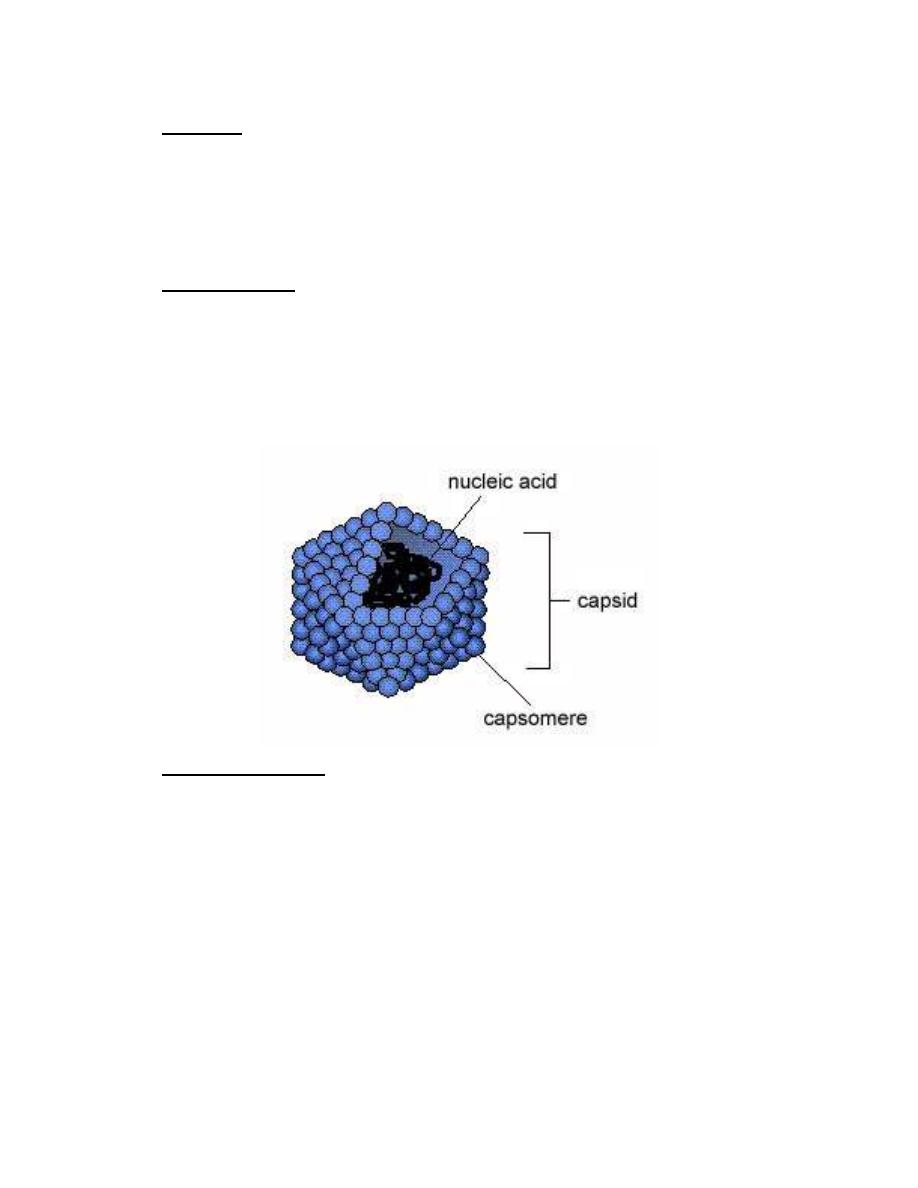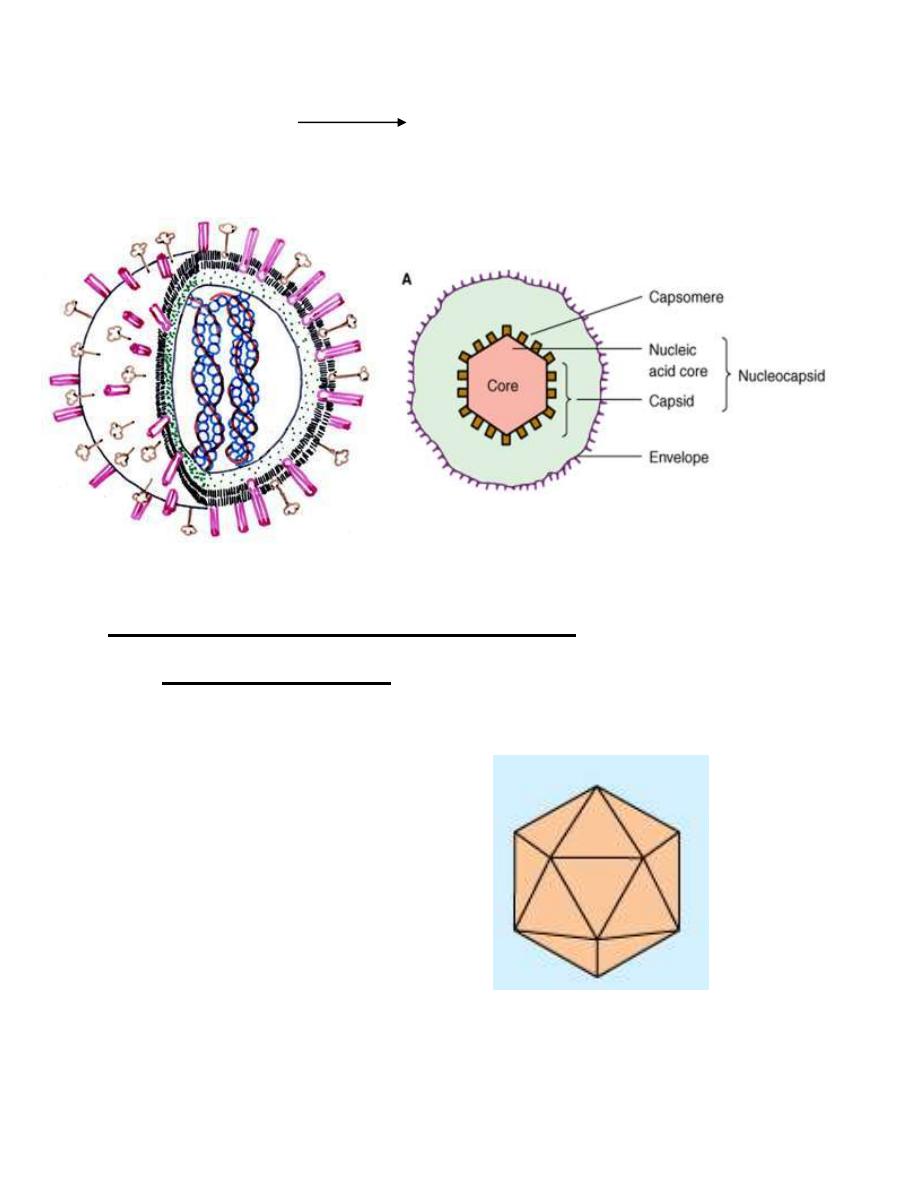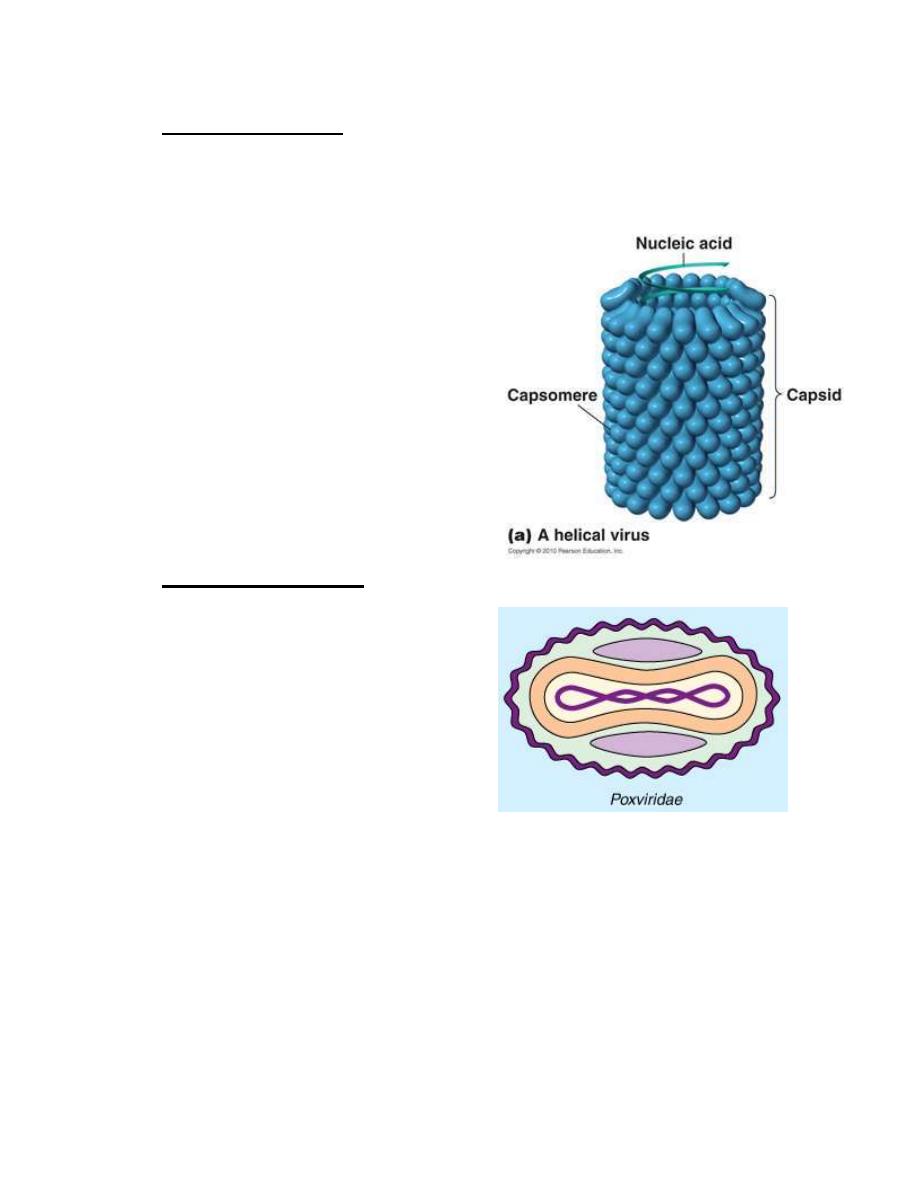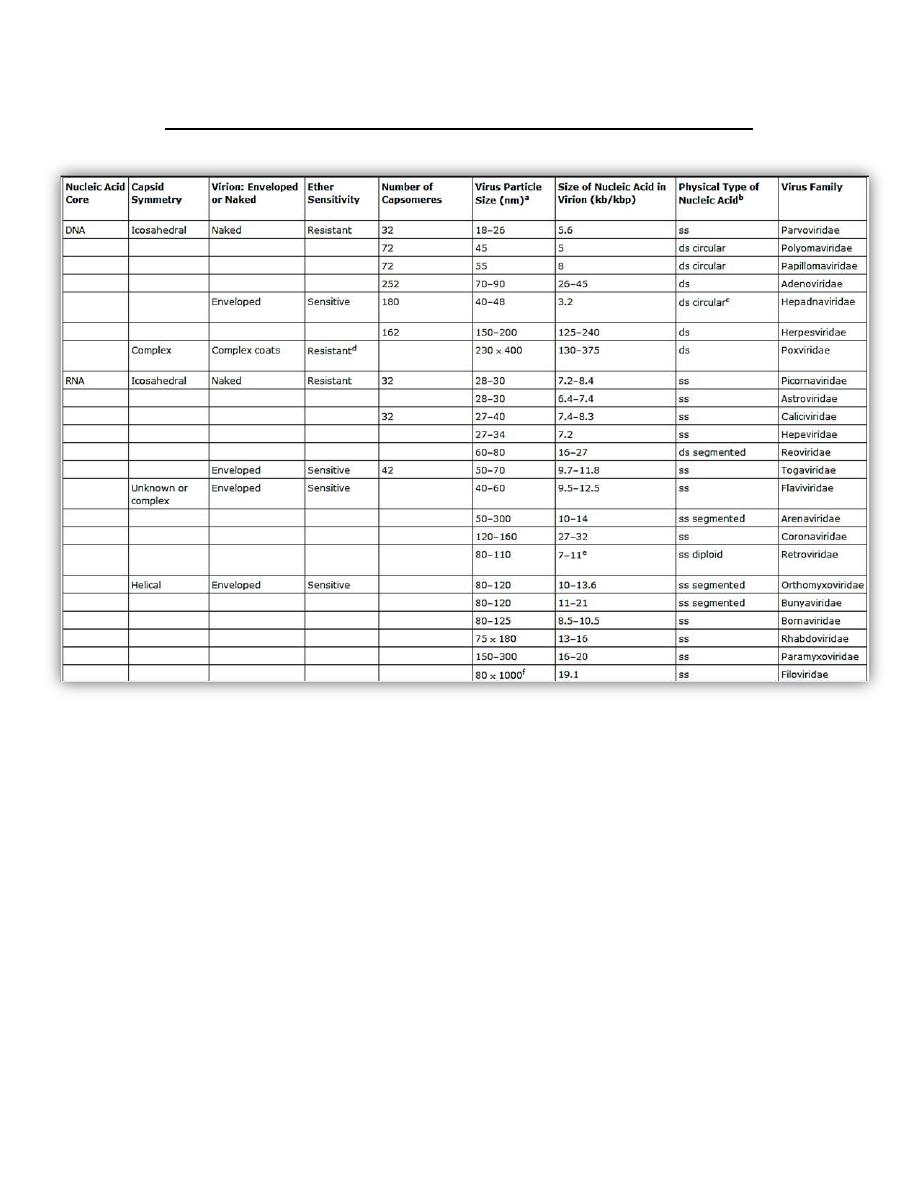
1
Virology
General properties of viruses
Aim:
study the general properties of viruses.
Objectives :
1. Characteristics of viruses
2. Classification of viruses
Comparison between viruses and bacteria
No. Property
Viruses
Bacteria
1
Size
20-300 nm
1000 nm
2
Genome
(type of nucleic acid)
DNA or RNA but
not both
DNA and RNA
3
Cell wall
Envelope present
in some viruses
Cell wall
4
Ribosomes
No ribosomes
Ribosomes
5
Multiplication by binary fission _
+
6
Sensitivity to antibiotics
_
+
7
Growth in culture media
Grow only in
living host cell
Grow in culture
media
.أ
د
.
فائزة عبذ اهلل مخلص
Lec. 1

2
What are viruses?
1. They are small size (20-300 nm in diameter) retaining
infectivity after passage through filters able to hold back
bacteria.
2. They are totally dependent upon a living cell, either
eukaryotic or prokaryotic, for replication and existence.
Viruses are obligate intracellular parasites.
3. They possess only one species of nucleic acid, either DNA
or RNA.
4. They have a component - a receptor binding protein for
attaching to cells.
The structure of viruses
:
1. Viral nucleic acid:
The viral nucleic acid is located internally and can be either single- or
double- stranded RNA or DNA. The nucleic acid can be either linear
or circular. The DNA is always a single molecule, the RNA can exist
either as a single molecule or in several pieces (segmented).
Some RNA viruses are positive polarity and others are negative
polarity.
Positive polarity is defined as an RNA with same base sequence
as the mRNA.
Negative polarity has a base sequence that is complementary to
the mRNA.

3
2. Capsid:
The protein shell, or coat, that encloses the nucleic acid genome and
mediates the attachment of the virus to specific receptors on the host
cell surface.
3. Capsomeres:
Morphologic units seen in electron microscope. Each capsomere,
consisting of one or several proteins.
Naked viruses are composed of nucleic acid + capsid (nucleocapsid)
4. Viral envelope :
The envelope is a lipoprotein membrane composed of lipid derived from
the host cell membrane and protein that is virus- specific.
Furthermore, there are frequently glycoproteins in form of spike-like
projections on the surface, which attach to host cell receptors.
Matrix protein mediates the interaction between the capsid proteins and
envelope.
The presence of an envelope confers instability on the virus.

4
Enveloped viruses NA + capsid + envelope
The whole virus particle is called virion.
Types of symmetry of virus particles
:
1. Icosahedral symmetry
Composed of 12 vertices, has 20 faces (each an equilateral triangle) with
the approximate outline of a sphere.
e.g. Herpesviruses , Adenoviruses

5
2. Helical symmetry
In which the capsomeres are arranged in a hollow coil that appears rod-
shaped. The helix can be either rigid or flexible.
e.g. Influenza viruses
3. Complex structures
e.g. Poxviruses

6
Reaction to physical and chemical agents
:
1. Heat and cold
Viral infectivity is generally destroyed by heating at 50-60 C
0
for 30
mint., hours at 20 C
0
, days at 4 C
0
. Viruses can be preserved at -90 C
0
or
-196 C
0
(liquid nitrogens).
2. PH
Viruses can be preserved at physiological PH (7.3).
3. Ether susceptibility :
Ether susceptibility can be used to distinguish viruses that possess
an envelope from those that do not.
4. Detergents:
Nonionic detergents solubilize lipid constituents of viral
membranes. The viral proteins in the envelope are released.
Anionic detergents also solubilize viral envelopes; in addition, they
disrupt capsids into separated polypeptides.
5. Salts
Many viruses can be stabilized by salt in concentrations of 1 mol/L.
e.g. MgCl
2
, MgSO
4
, Na2SO
4
.
6. Radiation
Ultraviolet, X-ray, and high-energy particles inactivate viruses.
7. Formaldehyde
Destroys viral infectivity by reacting with nucleic acid.
8. Antibiotics
Antibacterial antibiotics have no effect on viruses.

7
Classification of viruses
1. Virion morphology, including size, shape, type of symmetry,
presence or absence of envelope.
2. Virus genome properties, including type of nucleic acid (DNA or
RNA), size of genome, strandedness (single or double), whether
linear or circular, positive or negative sense (polarity), segments
(number, size).
3. Physicochemical properties of the virion, including PH stability,
thermal stability, and susceptibility to physical and chemical agents,
especially ether and detergents.
4. Virus protein properties, including number, size and functional
activities of structural and non-structural proteins, amino acid
sequences, and special functional activities (transcriptase, reverse
transcriptase, neuraminidase, fusion activities).
5. Genome organization and replication, including gene order, strategy
of replication (patterns of transcription, translation), and cellular sites
(accumulation of proteins, virion assembly, virion release).
6. Antigenic properties
7. Biological properties, including natural host range, mode of
transmission, vector relationships, pathogenicity, tissue tropisms, and
pathology.
Universal system of virus taxonomy:
Families – on the basis of virion morphology, genome structure and
strategies of replication.
Virus family names have the suffix – viridae.
Genera – based on physicochemical or serological differences.
Genus names carry the suffix – virus.

8
Families of Animal Viruses That Contain Members Able to Infect Humans
Jawetz , Medical Microbiology 25
th
edition /2010
